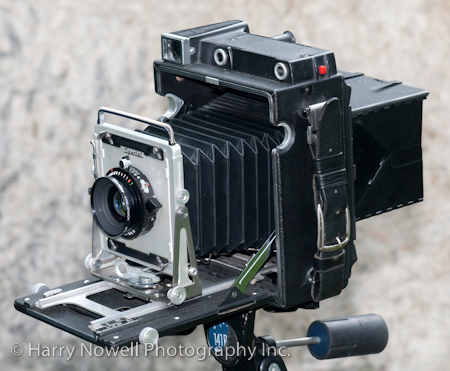I have eluded to a new project I am working on with a Graflex camera. So today – some more info.
The Graflex camera cornered the photography market for decades. It was the ultimate camera for many uses. Vast quantities of the camera were produced because of its merits:
- tough, fail proof mechanics
- compactness (for its time) and portability
- excellent results

Graflex cornered the editorial or press photography market for many years including WWII. The last of the Graflex cameras was produced in the early 1970s.
Look at any newspaper photo in the 30’s 40’s and 50’s and chances are it was shot with a Graflex. The work was amazing.
Many people still use the Graflex for artistic projects and the technical merits are still there:
- simple technology
- enormous file sizes
- matched with modern view camera lenses the Graflex knocks the socks off modern cameras
Enormous file sizes?
- Traditional 35mm film and new ‘full frame’ digital cameras capture subjects with a sensor or film size of 864 square millimetres.
- Most digital SLR cameras use a sensor that is 384 mm2.
- A 4×5 Graflex uses 12500 mm2 film.
For web use or small prints the extra size is wasted. Large prints is where the Graflex will shine. Many accomplished photographers use larger versions – Karsh and Burtinsky both use(d) an 8×10 film camera.
So, why don’t people use these cameras more? There are limitations.
- The camera is slow to use. You load 4″x5″ sheets of film individually. That’s time consuming.
- Each piece of film costs ~$6 to purchase and process.
One of the beauties of the Graflex is it slows you down. Being a high cost per shot forces you to get back to basics and think through the shot before exposing the film.
On a recent shoot I exposed 10 sheets of film in an hour – that’s fast! I then shot 41 frames of the same subject in 10 minutes on a digital camera. They’re different technologies with different uses.
